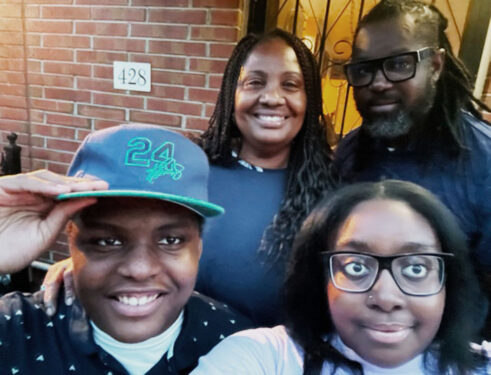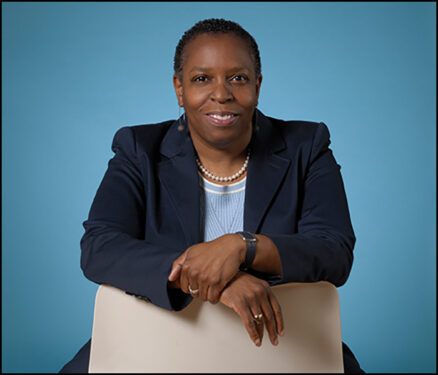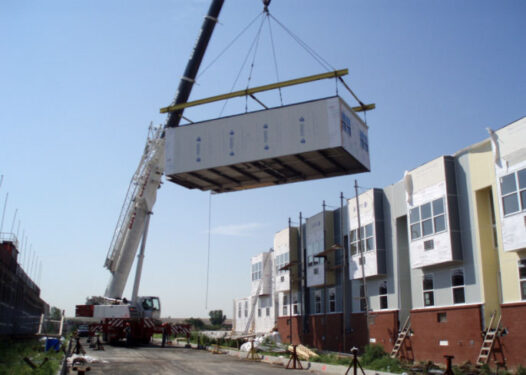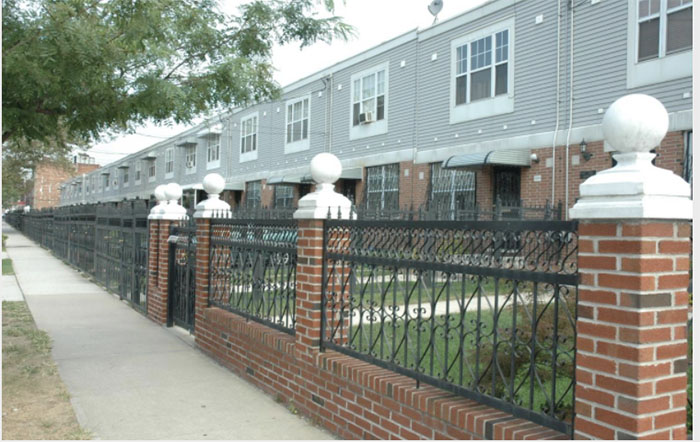
EAST NEW YORK — Patrice Jennings loves her home, but not the steadily rising amount of property taxes she has to pay to keep it.
Jennings struggles to make sense of New York City’s atypical property tax system, which has been widely criticized for disparities that often allow some homeowners to pay fewer taxes than others.
She’s quick to add that the joys of homeownership outweigh the woes, like the memories of her mother, Claudette Miller, carefully packing the family’s “Blue Willow” plates, cups, and saucers for a plane flight from Jamaica to their new home in Brooklyn.

That was in the late 1980s, but the cherished china stayed boxed until nearly a decade later when mother and daughter bought a home together in Brooklyn’s East New York neighborhood.
“I remember during the move, she finally had the opportunity of taking those plates out and washing them,” Jennings noted. “I said, ‘Aren’t you tired?’ She said, ‘No, they got to come out of the boxes!’ I was just thinking today what a joy it was for her.”
Miller died in 2007, but Jennings still has the home they bought on Williams Avenue, part of Nehemiah-New Lots affordable housing complex. She lives there with her own family and is also president of the homeowners’ association — hence her concern about property taxes.
The New York State Legislature in 1981 approved New York City’s current property rate system, infamous for its built-in caps on the assessed value of homes that appreciate in value. Thus, owners of these properties are still taxed, but not on the full values of their property.
“The variation is so scary,” said Martha Stark of Brooklyn, a former NYC Commissioner of Finance during Mayor Michael Bloomberg’s administration. “Even when the legislature adopted this crazy system, one of the key underpinnings was that there should be uniformity.
“But New York City’s tax structure is anything but uniform.”
Stark is the policy director for Tax Equity Now New York (TENNY).

A native of Brownsville, Stark attended Our Lady of Mercy Parish, which is the church home of Jennings. They don’t know each other, but Stark knows about the Nehemiah homes, having volunteered for the affordable housing group as a student.
After earning a law degree, Stark worked at a firm that represented clients in property tax disputes. Along with her stint as finance commissioner for Mayor Bloomberg, she also worked in the administrations of former Mayor David Dinkins and former Manhattan Borough President Ruth Messinger.
Stark explained how the legislature created the caps to protect homeowners from drastic spikes in property values so that “your assessment cannot increase more than 6% every year, and no more than 20% over five years.”
But, she added, owners of homes that don’t appreciate more than 6% don’t get a cap and must pay taxes on the full assessed value of their homes.
To illustrate the disparities, TENNY pulled data from the city’s 2017 assessment rolls. The sampling lists 19 city properties that sold in 2015. On opposite ends of the scale is a home in Crown Heights that went for $150,000, and another in Carroll Gardens that fetched $9 million.
Despite their diverse values, both properties had the same city tax bill, $4,297, according to TENNY’s research. That’s because the Carroll Gardens home was protected by the 6% cap.
Stark said TENNY had not yet analyzed data based on tax rates for the new fiscal year, which began July 1.
Complex, Opaque, and Arcane
Property tax revenue pays for nearly half (45%) of city services for an estimated 8.6 million residents in all five boroughs, according to the city Department of Finance.
The current tax system dates back to a lawsuit, Hellerstein vs. Assessor of the Town of Islip, Long Island. In this 1975 case, the New York Court of Appeals ruled that property should be assessed at “market value.” Subsequently, the legislature in 1981 overturned the Court’s ruling over a gubernatorial veto and enacted two systems: one for NYC and Nassau County; and one for the rest of the state.

For the city, the legislature approved four property classes, different assessment ratios, and caps. But within a decade the inequities became apparent.
In 2018, Mayor Bill de Blasio appointed the NYC Advisory Commission on Property Tax Reform. The move was a step toward making good on promises made before he took office to address the problem.
Media reports about NYC tax reform frequently note that Mayor de Blasio benefits from the caps because he owns property in Park Slope, which has seen values grow significantly in recent years.
Commissioners said in a preliminary report that, “A close look at New York City’s property tax system will show that there can be vast differences in how properties are classified, valued, and assessed, lending credence to the widely held characterization that the system is overly complex, opaque, and arcane.”
The commission’s report also includes 10 recommendations for tax reform. Among the suggestions are assessing most houses, co-ops, and condominiums at full market value and eliminating the caps.
In recent weeks, the commission has held public hearings in each borough through video conferencing. The hearings had been postponed during the COVID-19 pandemic.
Mayor de Blasio has said he wants reforms to be in the works before he leaves office at the end of December. However, all but one of the commission’s suggestions would have to be approved by the legislature in a future session.
About Human Dignity
Father Ed Mason, pastor of Mary, Mother of the Church Parish in East New York, said he worries that taxes might make affordable housing unaffordable.
Father Mason is a longtime community leader with the group East Brooklyn Congregations and he helped create the Nehemiah housing program. It now includes about 3,000 homes in Brownsville, and the New Lots and Spring Creek areas of East New York.
He has worked with both Jennings and Stark and he believes homeownership transforms people, generations, and communities.
“I’ve seen it happen,” Father Mason said. “The Nehemiah project brought stability. A lot of the homeowners were paying less in mortgage than they were for rent, even in public housing.
“A good quantity of them now own their homes. That puts extra money in their hands each month,” Father Mason added. “A lot of that money went into education for their children, which also dramatically changed the quality of people’s lives.”
But even with a 6% cap, some people’s tax bills can edge beyond their abilities to pay them. Stark described a hypothetical situation whereby property values on a $500,000 home grow 20%, making it worth $600,000. The 6% cap, however, keeps the homeowner from having to pay taxes on the whole 20% spike.
Meanwhile, consider another $500,000 home that sees a 5% hike in value. That house is now worth $525,000, but its owner gets no relief because the boost in value is below the 6% cap.
Jennings said her first annual city tax bills were around $2,100, but now she pays about $4,300. She is among Nehemiah residents who own their homes, but she worries taxes could keep rising at levels below the cap. She said another 50% added to her tax bill over time would be tough to budget.
Some Nehemiah residents, especially those who are retired with fixed incomes, already struggle, Jennings said. Therefore, Father Mason argued, it is unfair that some people don’t have to pay on the full value of their homes.
“It’s about human dignity,” he said. “Decent, affordable housing should be seen as a human right.”
For Fair Housing
TENNY in 2017 filed a lawsuit aimed at forcing the city to enact tax reform. It advanced through the court system but was overturned at the state’s Appellate Division. TENNY will appeal that ruling at the New York State Court of Appeals, Stark said.
Meanwhile, Stark last month wrote to the U.S. Department of Justice, seeking an investigation into NYC’s tax system.
“This ties back to Father Ed’s concern about affordable housing,” Stark said, “because one of the things that we wanted to get the Department of Justice to take a look at is whether or not the property tax system actually might violate the Fair Housing Act (of 1968).
“It’s our belief that it is possible that the tax structure itself perpetuates segregation. We think that having predominantly black and brown communities, in low-income communities, paying higher taxes, actually can lead to their values being lower, and it makes it incredibly difficult for them to move, other than to the same sort of neighborhoods.”
Jennings said tax reform doesn’t have to involve dueling neighborhoods, like “Park Slope vs. East New York.”
“It should not affect just one set of people,” she said. “It can’t just lean to the far right or to the far left. Let’s just work out something that balances out. Really, it should just be about recalculating things a little differently.”

